- Resume Templates
- Resume Examples
- Free Resume Builder
- How to Write a Resume
- Resume Format
- Resume Packs
- Cover Letter Templates
- Cover Letter Examples
- Free Cover Letter Generator
- How To Write a Cover Letter
- CV Templates
- CV Examples
- Free CV Maker
- Resume Help
- Cover Letter Help
- Job Interview
- Career Advice

6 Best Fonts for a Cover Letter (And How to Choose One)
When it comes to job search, every small detail can play for or against you. Spelling, layout, stylistic highlights, fonts — the tiny design tweaks can amplify or muddle the first impression you are to make.
All of the above is true for cover letters too. The easiest way to make the wrong first impression is by using a terrible cover letter font. OK, but which ones are good ones and which ones are bad?
I’ve talked to our graphic design team (the one behind all our resume templates !) to get their scoop on the best fonts for cover letters.
What is the Best Font for a Cover Letter?
The best font for a cover letter is Times New Roman . It’s a classic serif typeface that’s been in use for over 85 years. Times New Roman uses space economically which makes it easier to fit your cover letter into one page. This font looks equally great in print and in digital documents, plus it is supported by all major word processors and email apps. So your cover letter will be 100% readable!
What is the Best Font Size for a Cover Letter?
The best font size for a cover letter is 12 points . This is a standard font size for most business documents — not too big, not too small for different screen sizes. You can also opt for 10 or 11 points cover letter font size if you need to fit more information into one page, but this can affect the readability of your letter.
Best Fonts for a Professional Cover Letter: Overview
Times New Roman is a clear leader, recommended for use by career advisors from MIT , Purdue University , and Boston University among others for both resumes and cover letters.
But because Times New Roman is a serif font, it might be hard to read for people with dyslexia or other types of reading disorders . So if you want to be extra mindful, you can look for another professional cover letter font.
Just make sure it is:
- Serif or sans serif (avoid calligraphic typefaces)
- Readable (i.e. don’t have too many fancy elements)
- Widely supported by word processing apps
- Not Comic Sans (which is universally deemed unprofessional)
To help you narrow down your choice, here are several more best fonts for a professional cover letter we recommend using.
1. Arial
Arial font has been around since the 1980s. You are probably well-familiar with it if you are a Windows user. Arial has been the default font for this operating system since the 1990s. It’s a web-friendly sans serif typeface. However, many graphic designers suggest avoiding Arial in print as it ends up looking somewhat plain, especially in bigger sizes.
But since most of us dispatch email cover letters these days, it shouldn’t be much of a concern.
2. Helvetica
Helvetica is a Swiss-born typeface as its name indicates (Helvetia is the Latin word for Switzerland). Originally created by a freelance designer for a Haus foundry, it became hugely popular thanks to Apple. While Microsoft chose Arial as the main font for its OS, Apple picked Helvetica for the same purpose.
Helvetica is also a sans serif font and it’s very readable. That’s because it has even kerning in any variation — bold, italic, or skinny — which gives the reader a sense of clean spacing.
3. Calibri
Calibri is a digital-native sans serif post. It was created specifically for online documents in the early 2000s — and presented to the general public with Microsoft Office 2007 and Windows Vista releases. Up till today, it remains the default font in MS Office.
It has a pleasant rounded feel to it, paired with a tight layout. Thanks to it, you can flexibly change text size without losing resolution. So if you need to fit a longer cover letter into one page , try using Calibri in size 11.
4. Georgia
Don’t let this name trick you — the Georgia typeface was designed in the US in the 1990s for Microsoft corporation (again). But it was introduced only in 2006 as one of the standard fonts.
Georgia was originally envisioned as an alternative serif font to Times New Roman, which would look better on smaller screen sizes. Times New Roman becomes hard to read in small sizes.
Overall, Georgia is a great cover letter font option for those who want to add some extra “personality” to your cover letter, while still maintaining professionalism.
5. Garamond
Garamond is another fine example of a time-tested font. It was modeled after an old-styled Latin typeface, used by a 16th-century engraver Claude Garamond. But don’t let its age deter you, Garamond looks fresher compared to other popular serif fonts like Times New Roman and Georgia. So if you want to give your cover letter a subtle creative flair, go for this option.
Verdana typeface family is another ‘brainchild’ of Microsoft Corporation, released in the late 1990s. It was modeled after humanist sans serif fonts such as the ones still used by the London Underground.
Yet Verdana has a more modern feel to it and touts generous width and spacing between letters. It also has a prominent distinction between frequently confused letters just as lowercase i j l, the uppercase I J L, and the number 1.
Making Cover Letter Font Selection Easier
If you feel that typography isn’t your forte, go with a “safe” choice of Times New Roman. Yes, it’s somewhat overused, but this fact doesn’t make it less professional. Alternatively, opt for popular sans serif fonts such as Ariel, Helvetica, or Verdana. There you go — you now have no more excuses for not working on your cover letter !

Elena runs content operations at Freesumes since 2017. She works closely with copywriters, designers, and invited career experts to ensure that all content meets our highest editorial standards. Up to date, she wrote over 200 career-related pieces around resume writing, career advice... more
you might also like

What is the Purpose of a Cover Letter? Simple Answer

How to Include Salary Requirements in a Cover Letter?

4 Best Cover Letter Opening Lines to Make a Mark in the First Paragraph

148 strong verbs to use in your resume and cover letter

Cover Letter Format: The Ultimate Guide
Leave a response cancel reply.
Explore Jobs
- Jobs Near Me
- Remote Jobs
- Full Time Jobs
- Part Time Jobs
- Entry Level Jobs
- Work From Home Jobs
Find Specific Jobs
- $15 Per Hour Jobs
- $20 Per Hour Jobs
- Hiring Immediately Jobs
- High School Jobs
- H1b Visa Jobs
Explore Careers
- Business And Financial
- Architecture And Engineering
- Computer And Mathematical
Explore Professions
- What They Do
- Certifications
- Demographics
Best Companies
- Health Care
- Fortune 500
Explore Companies
- CEO And Executies
- Resume Builder
- Career Advice
- Explore Majors
- Questions And Answers
- Interview Questions
Choosing The Best Font For Cover Letters and Resumes
- Cover Letter Format
- Salutation and Greeting
- Who To Address When Unknown
- How To Start A Cover Letter
- How To End A Cover Letter
- Best Cover Letter Font And Size
- Cover Letter Spacing
- Cover Letter Length
- Key Elements Of A Cover Letter
- How To Write An Address
- Official Letter Format
- Cover Letter Opening
Find a Job You Really Want In
When seeking the ideal job, your cover letter font, as well as your resume font, are your initial opportunities to showcase your qualifications and professionalism. Your choice of fonts and font size plays a pivotal role in leaving a lasting impression on potential employers. Discover how selecting the best cover letter fonts and font sizes for your application can significantly impact your job application’s success..
Key Takeaways:
Pick the appropriate font for the role and be stylistically consistent throughout your resume . This helps makes a more professional appearance
Good choices for standard, professional fonts to use on a resume include Times New Roman, Arial, Helvetica, and more – always stick to fonts that look simple and clean.
A page that’s too cluttered with text looks unprofessional and doesn’t give the hiring manager a good reading experience, so make sure to use white space appropriately.

Why does font matter in a cover letter?
Picking an appropriate font size for a cover letter, personalize your font selection, including white space, reminders for email cover letters, best fonts for your resume 2023 faq, final thoughts.
- Sign Up For More Advice and Jobs
Choosing the right cover letter font and resume font is important because can make or break whether your document is visually appealing and giving the impression you want. To pick your cover letter’s font, you should first think about what your intention is for your letter. For cover letters, the main intention is for your words and message to do all the talking. This means the font should not be artsy, fun, or obscure. It should allow your words to be immediately legible.
Additionally, consider being consistent in your font choice for both your cover letter and resume. The stylistic consistency may seem like a small detail, but it allows for recruits or hiring managers to easily flow from one document to the next, without any distractions in the way.
The size of your font is equally as important as choosing the correct font for your cover letter. If the text of your letter is too small or visibly challenging, your application might be passed up for another candidate.
There are three general options when picking a font size, 10, 11, or 12. Your cover letter should always fit on one-page, so consider this when formatting your first draft. A smaller font is appropriate if it helps keep all of your text on one page. However, if your cover letter is on the shorter side , choosing font size 12 is equally as appropriate.
It’s also important to note that different fonts come in a variety of sizes.
Once your cover letter is written, spend some time on formatting to make sure it looks good and fits on one page. If you have already selected the smallest size and your copy bleeds into a second page, try adjusting the margins or see where you can cut to condense the letter.
While there is no science behind picking the perfect font, there are specific fonts that are highly regarded for their perception of being easily readable, professional, and clean. Below, we outline some of the best cover letter fonts to choose from.
Arial features crisp lines and no-frills, an easily readable and familiar font for a cover letter . Being one of the most popular cover letter fonts in the world, it’s also beneficial as the standard font for Microsoft Word and Google Docs. There’s a good chance your recruiter or hiring manager has this font existing in their word processor of choice.
Avenir is a good way to be bold on your resume and cover letter but without taking the risk. This font features playful curves that help liven up any piece of copy to stand-out in the best way possible. It’s a good choice of font if you are looking to get into the design space or any creative type of job.
Calibri was initially designed by Microsoft as a candidate to replace Times New Roman in Word, and it’s a standard font usually found on resumes or cover letters. With its clean and simple typeface, it’s easily one of the most readable fonts out there. It’s both familiar and friendly, a great choice for any cover letter.
Cambria has a serif face and traditional design that makes it easy to read both in print or on the computer screen, even in low resolutions. The even spacing and proportions make this an ideal choice for cover letters.
Garamond is a more delicate font, but with a classic serif form, good for conveying an air of sophistication on resumes. Based on sixteenth-century designs, the Garamond style typefaces are perfect for both print and digital cover letters readability.
Georgia is a popular font developed by Microsoft, and can be a good choice for cover letter font because it’s unique yet clean. The serif typeface is both elegant and legible, with a mixture of both thick and thin strokes. This font is also used by Georgiacompanies in their branding, such as Amazon and the New York Times.
Helvetica is one of the most widely used sans-serif fonts in the world. Its neo-grotesque design was first brought to popularity by Swiss designers. Its neutral and clean look has made it a top choice for many businesses.
Times New Roman is the most traditional font of all, and is likely the most popular choice for resume font. It is popular for most job seekers with its simple and elegant design. Keep in mind that since this is one of the most common resume and cover letter fonts, it’s not something to use if you’re looking to be unique or convey creativity. But that’s not to say it’s not a great choice. This is a safe and easy font choice for your cover letter.
Trebuchet MS is a great font choice if you are looking to fill a little extra space on your cover letter. Being a bit broader with thicker lines, this font will fill the page and allow for easy readability. It’s also a common font found in most word processors and Google Docs.
Verdana was initially designed to be readable in small sizes and on low-resolution screens, making it perfect if you need to use a smaller font size for your cover letter. It has a large x-height with wide proportions and letter-spacing to allow for easy legibility.
Montserrat is a contemporary sans-serif font that reads as both stylish and legible on cover letters. Its clean and minimalist design, coupled with uniform stroke widths, lends a modern and fresh look to your application materials. Montserrat is an excellent choice for those seeking a clean and trendy aesthetic while maintaining readability and professionalism in their resume or cover letter.
Baskerville is a classic serif font known for its elegance and readability, two qualities you may want to embody when writing your cover letter. With roots dating back to the 18th century, Baskerville offers a sense of tradition and sophistication. The well-defined letterforms and high contrast between thick and thin strokes make it a perfect choice for conveying professionalism and attention to detail in your resume or cover letter.
Going with one of the listed fonts for your cover letter and resume puts you in a good place for the formatting of your cover letter. As with many things, font choice is subjective, and you should make the choice you feel most comfortable with.
The last thing to be mindful of is how many fonts you choose to use for your cover letter.
Since there are a few different pieces to a cover letter, you may be tempted to use different fonts for headers , introductions , or conclusions . However, it’s good practice to only use one font for your cover letter. Maintaining this consistency ensures a smooth reading process for your recruiter or hiring manager.
When formatting your cover letter, it’s always important to remember that there is a significant amount of space required at the top of your letter. Additionally, you should leave white space between each paragraph and each new section of the cover letter .
Usually, word processors have templates that you can use to make sure you properly space your cover letter. Again, don’t forget that your entire cover letter should fit on a single page, so it’s important to take some time to play with the formatting once you are done writing your letter. Perfecting your formatting ensures you will make a stellar first impression.
The best practices outlined in this article are mostly for cover letters that are in hard-copy or emailed as a Word document or PDF attachment. If your job application instructs you to include your cover letter in the body of the email, you might be tempted to copy, paste, and send.
However, be mindful of how the formatting shifts when you copy and paste things into an email, making it tricky for the hiring manager or recruiter to read. Be sure you either fix the formatting in the body of the email or copy and paste it as plain text directly into the email.
What role does font choice play in my resume and cover letter?
Font choice plays a crucial role in your resume and cover letter as it directly impacts readability and the overall impression you make on potential employers. The right font can enhance professionalism, clarity, and visual appeal, while the wrong choice can distract from your content or make it difficult to read.
Should I use a serif or sans-serif font for my resume and cover letter?
Whether to use a serif or sans-serif font depends on your personal preference and the style you want to convey. Serif fonts, with their small decorative strokes, often exude tradition and professionalism. On the other hand, sans-serif fonts are clean and modern, offering a sleek and contemporary look. Ultimately, the choice should align with your industry and the image you want to project.
The font you choose is your resume’s first impression, so choosing the right one can you get your job applications started on the right foot. The way your resume is organized and how it looks at a glance can say a lot about you even before the hiring manager even starts to read it.
Be sure to use a simple, professional font and break your resume down into sections balanced out by plenty of white space.
How useful was this post?
Click on a star to rate it!
Average rating / 5. Vote count:
No votes so far! Be the first to rate this post.

Caitlin Mazur is a freelance writer at Zippia. Caitlin is passionate about helping Zippia’s readers land the jobs of their dreams by offering content that discusses job-seeking advice based on experience and extensive research. Caitlin holds a degree in English from Saint Joseph’s University in Philadelphia, PA.
Matt Warzel a President of a resume writing firm (MJW Careers, LLC) with 15+ years of recruitment, outplacement, career coaching and resume writing experience. Matt is also a Certified Professional Resume Writer (CPRW) and Certified Internet Recruiter (CIR) with a Bachelor of Science in Business Administration (Marketing Focus) from John Carroll University.
Recent Job Searches
- Registered Nurse Jobs Resume Location
- Truck Driver Jobs Resume Location
- Call Center Representative Jobs Resume Location
- Customer Service Representative Jobs Resume
- Delivery Driver Jobs Resume Location
- Warehouse Worker Jobs Resume Location
- Account Executive Jobs Resume Location
- Sales Associate Jobs Resume Location
- Licensed Practical Nurse Jobs Resume Location
- Company Driver Jobs Resume
Related posts

How to Sign a Cover Letter (With Examples)
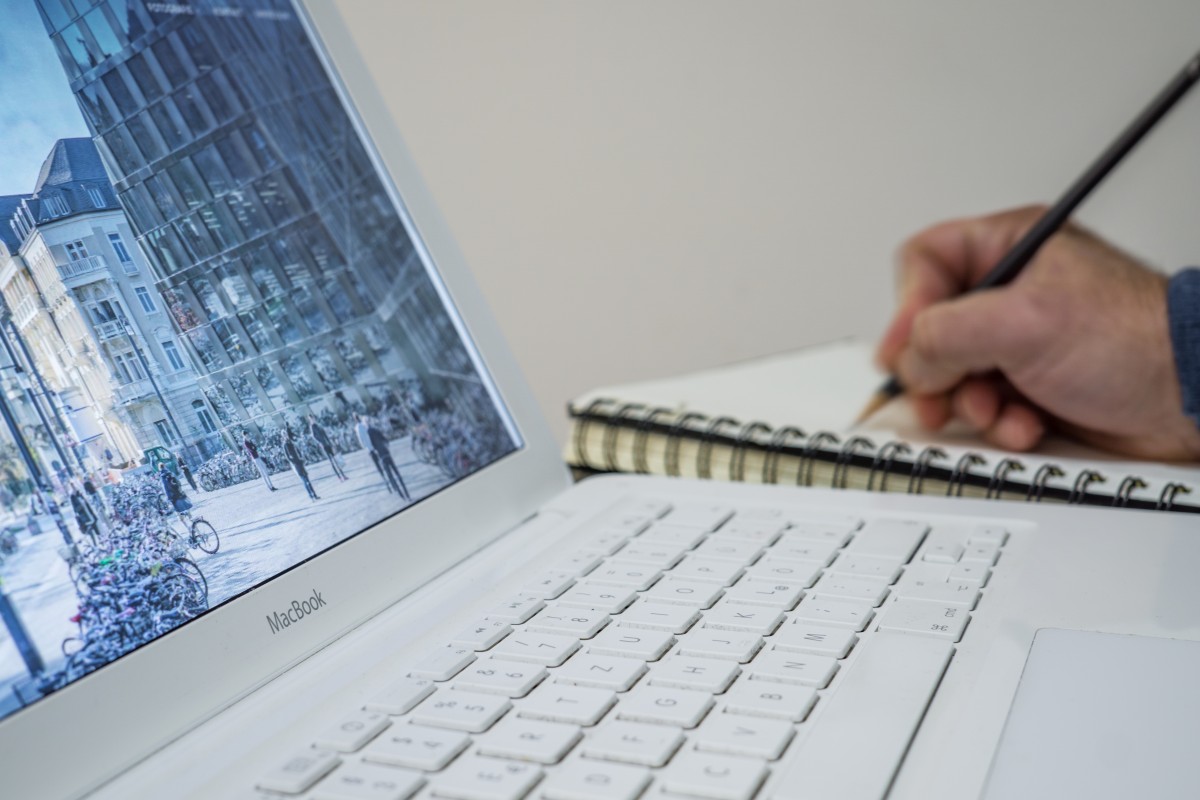
Cover Letter Examples for Every Situation

When Are Cover Letters Necessary (With Examples)
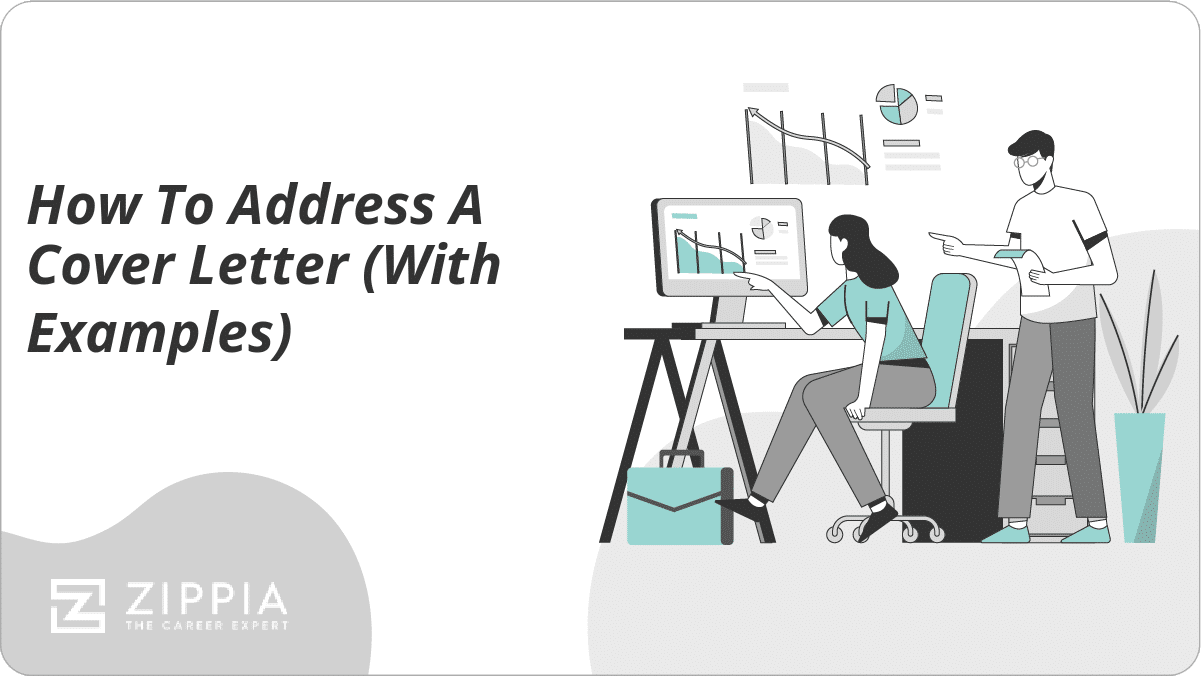
How To Address A Cover Letter (With Examples)
- Career Advice >
- Cover Letter >
Best Cover Letter Fonts for Applications
When you submit a job application, it’s important that hiring managers can read your cover letter and resume easily. Choosing the right font for your application materials is essential in making this part of the process flow smoothly. In this article, learn what the best cover letter fonts are for your next cover letter.
Why are cover letter fonts important?
Choosing the right font is an important step to making sure your cover letter is legible and professional looking. By selecting a simple, easy-to-read font for your cover letter, you can increase the chance that your job application will make a good first impression on the hiring team.
A cover letter with the correct spacing and size can also make it more visually appealing. A hiring manager may be more likely to read the content of your cover letter if it looks simple and businesslike.
Sometimes, a hiring team may receive hundreds of applications. Since a cover letter is typically the first document a recruiter reviews, the format should be scannable so they can gather basic information about you and your qualifications. If your cover letter impresses a recruiter, they may be more likely to review the rest of your application materials and invite you to an interview.
How to choose the best cover letter font
Follow these steps to choose the best cover letter font:
1. Choose a font that you can use in your cover letter and your resume
When you’re choosing a font for your cover letter, make sure to pick a font that you can use throughout your application and resume. Using one font for both your cover letter and resume creates consistency and looks more professional.
2. Opt for a professional and easy-to-read cover letter font
When choosing a cover letter font, select a simple option that conveys your professionalism. Since the hiring team may read your application on a desktop, laptop or mobile device, you should ensure that your cover letter font is easy to read even on smaller screens.
You can choose between a serif and sans serif font type. Serif fonts have small strokes at the ends of letters. Sans serif fonts have no strokes at the ends of letters. Opting for a serif font can add a personal style to your application, while choosing a sans serif font can make your letter look simple and straightforward.
Here are the most popular cover letter fonts for job applications:
- Times New Roman: As one of the most common fonts for professional documents, Times New Roman can make your cover letter appear uncomplicated. You can use Times New Roman when applying to most companies.
- Garamond: This serif font features a classic appearance that can make both your cover letter and resume look professional. Garamond works best for printed cover letters.
- Cambria: For a less formal option, you can consider Cambria. This is the standard font for Microsoft Word since it’s easy to read for many users.
- Georgia: If you plan to email your cover letter, Georgia is an ideal font. You can also use it if you need to send your materials as electronic documents.
- Arial: This is one of the most popular sans serif fonts, as it is visually appealing on both paper and electronic devices.
- Helvetica: Similar to Arial, Helvetica is a simple, straightforward sans serif font. Many people believe Helvetica has a more sophisticated look, making it a popular option.
- Calibri: With its narrow style, Calibri is easy to read on screens, making it a good choice for electronic applications.
3. Use standard formatting with your font
Your resume might include a variety of text formatting, such as bold or italics, to emphasize various details. However, you should use standard formatting throughout your cover letter for simplicity.
4. Select a professional font size and use it consistently
Choose a font size that is clearly legible. For most fonts, 12-point is the standard size, but some fonts may look better at 10- or 11-point. To find the ideal size for your cover letter, try each of these standard sizes to find the most legible version. Make sure your cover letter easily fits onto a single page.
5. Use appropriate spacing with your cover letter font
The spacing of your cover letter can also have an effect its readability, so it can be helpful to examine different options. Single, double and 1.5 spacing are the most common selections. Remember to leave 1-inch margins around the edges of the document for additional white space and improved legibility.
6. Review your cover letter font choice before submitting
After selecting a font, size and spacing, review the letter prior to submitting it. Make sure the entire cover letter appears both professional and legible. If you are emailing your application materials, consider sending the email to yourself first so you can review first before sending it to the hiring manager.
7. Save the font and formatting you use in your cover letter
If you plan to send your cover letter electronically, take steps to preserve the format first. When you email your application in word processing format, such as a Microsoft Word file, the formatting may not transfer correctly. Consider converting your cover letter and resume to a PDF file to retain the style.
If you intend to copy and paste your cover letter into the body of an email, make sure to reapply the font, sizing and spacing to preserve its appearance.
- Knowledge Base
- Free Resume Templates
- Resume Builder
- Resume Examples
- Free Resume Review
Why are cover letter font, size, and style important?
So you’ve slaved away for days on end drafting a great cover letter to go with your resume but you end up choosing an unprofessional font for your cover letter and all your hard work goes in vain because of a minor mishap.
Not exactly a situation that job seekers dream about, isn’t it?
You see, your cover letter font is important because it directly impacts your letter’s readability and appeal.
If the recruiters can’t read the contents of your cover letter with ease, the chances of you being shortlisted are slim.
Whereas, a well-chosen cover letter font with the right styling, size, space, and margin can help you make a good impression on the recruiters.
Read on to learn more about cover letter font and the following related FAQs:
- What font is best for cover letter?
- How to choose a cover letter font?
- What font size should a cover letter be?
- How to set cover letter margins and font spacing?
- What cover letter font style should you use?
- What are some common FAQs about cover letter font?
Top 10 Cover Letter Fonts
When it comes to cover letter font type, the options are plenty. The key is simply to ensure that the font you select looks professional and simple.
Here are some top cover letter fonts that you can choose from:
Times New Roman: If you want to play it safe and go for the traditional approach, Times New Roman is your best choice. This font type is widely used when candidates are applying for government jobs and other traditional industries such as law and medicine.
Helvetica: Being a contemporary font option, this is a suitable choice for your cover letter font if you are seeking jobs in marketing, sales, or business. Due to its concise design, it does not distract the readers from the content.
Calibri: With its modern and light design, Calibri makes for an elegant cover letter font. This font’s popularity has toppled Times New Roman as the default font in Microsoft Word.
Arial: If you are unsure of the type of fonts job seekers generally use in your industry, Arial is a great option for your cover letter font. Due to its sleek and minimal design, the majority of candidates prefer this font style.
Garamond: Garamond is a popular cover letter font used by job seekers in their applications. It is a classic serif font that is commonly used by professionals in both creative and academic industries.
Trebuchet MS: Due to its slightly larger and bolder design, Trebuchet MS takes up more space and is well suited for fresh graduates who are writing a short cover letter with less content.
Didot: Didot is a good cover letter font if you are applying for jobs in the fashion, architecture, or graphic design industries as this cover letter font is considered to be more artist-friendly and creative among others.
Tahoma: This cover letter font type can be a great option for job seekers from any industry as it is very reader-friendly, modern, and simple.
Georgia: Since this font is commonly used by newspapers, it is one of the most popular fonts in the writing industry. With its modern yet classic design, Georgia is a good cover letter font if you are targeting jobs in the writing or creative industries.
Cambria: If you are sending your cover letter in an online format, Cambria is a great font for your cover letter as it was specially designed to facilitate screen reading.

Also read: How to write a cover letter in 2022?
Tips on How to Choose a Cover Letter Font
Even if you want to stray away from a traditional font like Times New Roman and want your cover letter to stand out from the rest, your top priority must be your cover letter’s reader friendliness.
Your cover letter font must not distract the recruiters from its content. Avoid using fonts that include special characters or are too stylish.
Since the majority of employers use the Applicant Tracking System (ATS) to select suitable candidates based on the use of relevant keywords in their resumes and cover letters, it is best to use simple cover letter fonts to ensure that the ATS can easily scan your cover letter for the same.
However, this doesn’t mean that your cover letter font must be bland or outdated. You can choose a modern and sharp font that can help your cover letter stand out by following these tips:
Do Your Research
Yes, you need to research the company you’re targeting to probe the type of font they have used in their websites, job listings, press releases, etc.
The chances of them resonating with your cover letter will be higher when they see a familiar font in your cover letter as opposed to a completely new font.
Accordingly, choose a font (from the recommended list) that matches their font type for your cover letter.
Consider the Industry Type
When you are choosing a cover letter font, you must also consider the nature of the industry you’re in.
For instance, if you are applying for jobs in the creative industry such as graphic design, writing, fashion, marketing, etc, you can choose a font with a slightly stylish design like Didot, Helvetica, Proxima Nova, and Garamond.
While aspiring candidates in conventional industries like medical, law, and engineering fields, must stick with traditional fonts like Times New Roman and Calibri.
Ensure Uniformity
Always ensure that you use only one cover letter font throughout your letter.
Mixing and matching is the last thing you want to do in your cover letter as it will distract the recruiters from the content and it also doesn’t look professional.
Instead, you can use different font sizes and types to segregate the headings and the body.
Choose the Correct File Format
To ensure that your cover letter font remains intact, you must save your file in a PDF format unless the recruiters have specified any other format like .doc or Docx. in the listing.
Also read: What are some good cover letter examples?
Cover Letter Font Size and Spacing
The standard cover letter font size commonly used by candidates is 12 points.
However, depending on the type of font you select, the size can be changed between - 10, 11, and 12, points.
The reason is, that certain fonts can appear too small or too large at 12 points due to their spatial proportions.
And since your cover letter must not exceed one page, you can adjust your cover letter font size to fit the page.
But ensure that you don’t go below 10 points and that the smaller cover letter font size does not affect the readability.
If your font size is too small, recruiters may reject your cover letter even before reading it and the ATS may not be able to scan the small font size.
- Consider showing your cover letter to your friends and family for feedback on its reader-friendliness and appeal.
As for the cover letter margins and font spacing, ensure you follow the below-given guidelines:
- Maintain 1.5 line spacing if you are following the 3 paragraph cover letter format
- Stick to the universal business letter margin standard and keep 1" margins on all sides of your cover letter
- Use single space in your cover letter and skip a line between each section (Header, date, address, subject line, salutation, and the 3 paragraphs)
- Left-align the contents of your cover letter to follow the universal business letter standard

Also read: How to start a cover letter?
Cover Letter Font Style
Once you are done choosing the perfect cover letter font size and type, the next step is highlighting crucial details with a different cover letter font style.
While the body of your cover letter will not have any font style, you can use Bold and Italics to draw the recruiters' attention to certain details.
Avoid using cover letter font style like underlining as it serves the same purpose as bolding.
Besides, bolding is the most commonly used cover letter font style to highlight details in professional paperwork.
Also read: How to write a cover letter for resume?
FAQs about Cover Letter Font
Is 11 point font okay for a cover letter?
Yes, depending on the font type of your cover letter, the font size can range between 10-12 points.
Should my cover letter and resume be the same font?
Yes, to maintain uniformity, you must use the same font in your cover letter and resume.
Why are cover letters important?
Cover letters are important because 65% of hiring managers agreed that a well-written cover letter can influence their hiring decision.
Also Read: How to choose an ideal cover letter template in 2022?
Key Points from the Blog
- A well-chosen cover letter font with the right styling and size can help your cover letter make a good impression on the recruiters.
- Always ensure that the cover letter font you select is simple and easy to read .
- Avoid using cover letter fonts that include special characters or are too stylish as it can distract the recruiters from the content and can block the ATS from picking up keywords from your cover letter.
- Use only a single cover letter font type in your letter to ensure uniformity.
- Although the standard cover letter font size used by candidates is 12 points, you can change it between 10-12 points , according to the font type and the amount of content you have in your letter.
- Use cover letter font style like bolding to draw the recruiters' attention to crucial details.
If you are still confused over cover letter font size and style, you can simply use Hiration’s AI-powered cover letter builder which will help you draft a perfect letter without the hassle of selecting the font type or size. You can also write to us at [email protected] .

Share this blog
Subscribe to Free Resume Writing Blog by Hiration
Get the latest posts delivered right to your inbox
Stay up to date! Get all the latest & greatest posts delivered straight to your inbox
Is Your Resume ATS Friendly To Get Shortlisted?
Upload your resume for a free expert review.

Choosing a Resume + Cover Letter Font? 10 Tips & Examples
What is the best font for your resume? It’s not a loaded question. Too often people over think typography choices for resumes or cover letters because they think the type has to look “designed.” The reality is that it just needs to be highly readable.
So where do you start? Today, we’ve got ten great options to help you choose a readable, well-designed typeface to help your resume or cover letter stand out.
All these fonts stand out from the crowd, while also keeping your resume clear, classy, and readable!
2 Million+ CV & Resume Templates, Cover Letters + More
Download thousands of resume templates, cover letters, and many other design elements, with a monthly Envato Elements membership. It starts at $16 per month, and gives you unlimited access to a growing library of over 2,000,000 presentation templates, fonts, photos, graphics, and more.
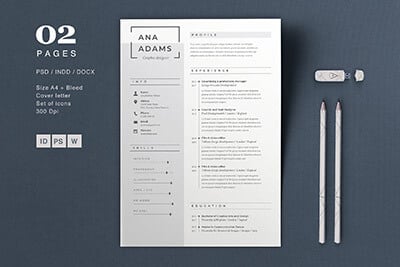

Resume Anna
Word / psd / indesign.

Pro Resume Template
Doc, psd, ai.

Pastel Resume
Ai, pdf, doc.
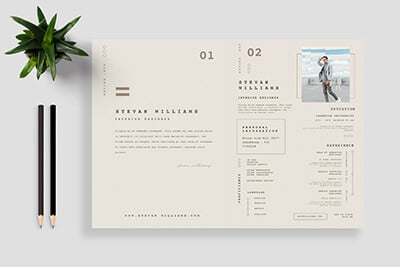
Unique Resume Template
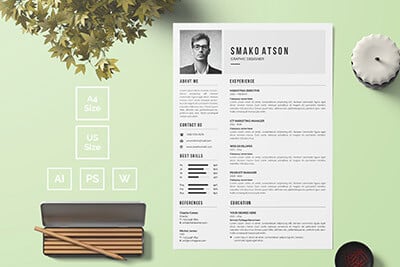
Minimal Resume

Colorful Resume
Illustrator.
See More CV Templates
1. Bolt Sans
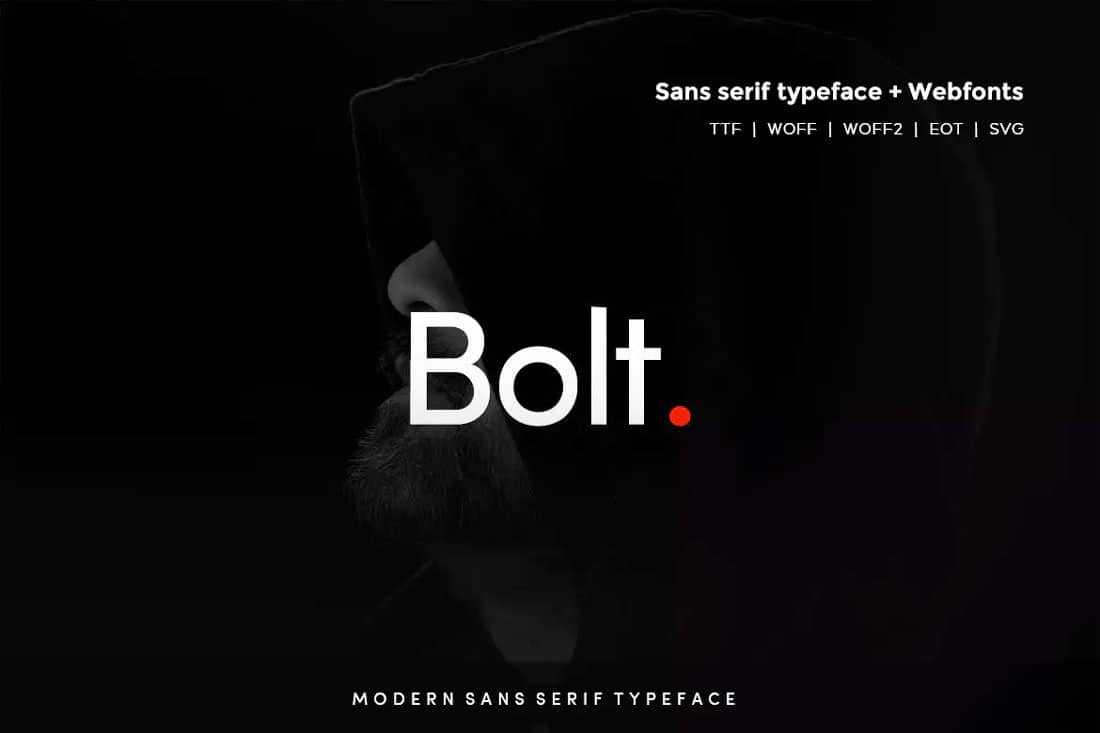
The number one thing to think about when choosing a cover letter or resume font is how will it look in print? There are so many great typefaces available for download, but they aren’t all designed to be printed.
You need a high-quality typeface with an extensive character set so that you won’t be struggling to find certain characters or print elements later.
Bolt Sans is a simple sans serif with a modern feel. It has normal spacing (so it won’t be tough to use with larger text blocks) and has a light minimal feel. The characters are exceptionally easy to read while maintaining some personality.
Pro tip: Use the same typeface for your resume, cover letter and portfolio website. By selecting a font that includes web font options, you don’t have to worry about matching typefaces from print to web. (Bolt includes OTF, TTF and web fonts.)
2. Addington CF
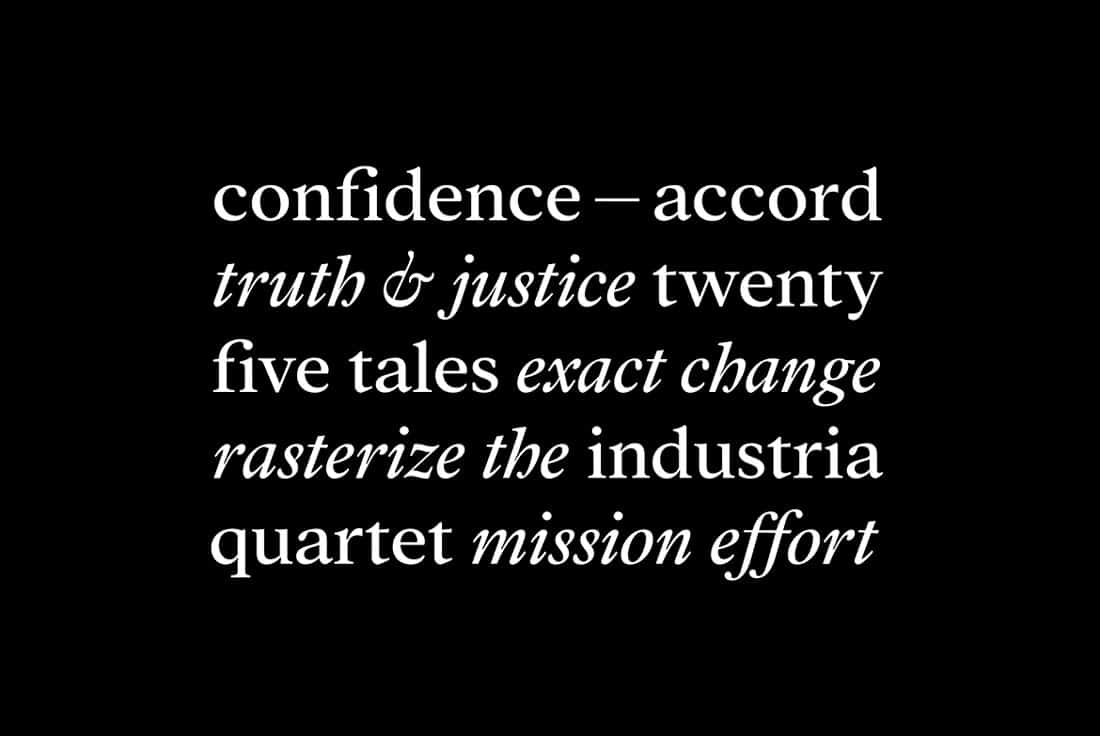
A strong serif typeface can communicate reliability and professionalism. This might communicate just what you want to a potential employer.
Addington CF is a strong sans serif in a modern style. The trusty typeface looks lovely at almost any size and is highly readable.
Pro tip: When using a serif typeface consider using it as the body text element while pairing it with a sans serif for headers or other display elements within the resume.
3. RNS Sanz

What is the best font for your cover letter? Start with a typeface that’s strong and looks great at small sizes and in heavier text blocks. You might have to try the text out to see how it looks before committing to a certain typeface.
Pro tip: Stick to dark text on a light background (black on white is idea) for your resume and cover letter. Reverse type or colors can be difficult to read (or control based on individual printers) and should be avoided.
4. CA Texteron
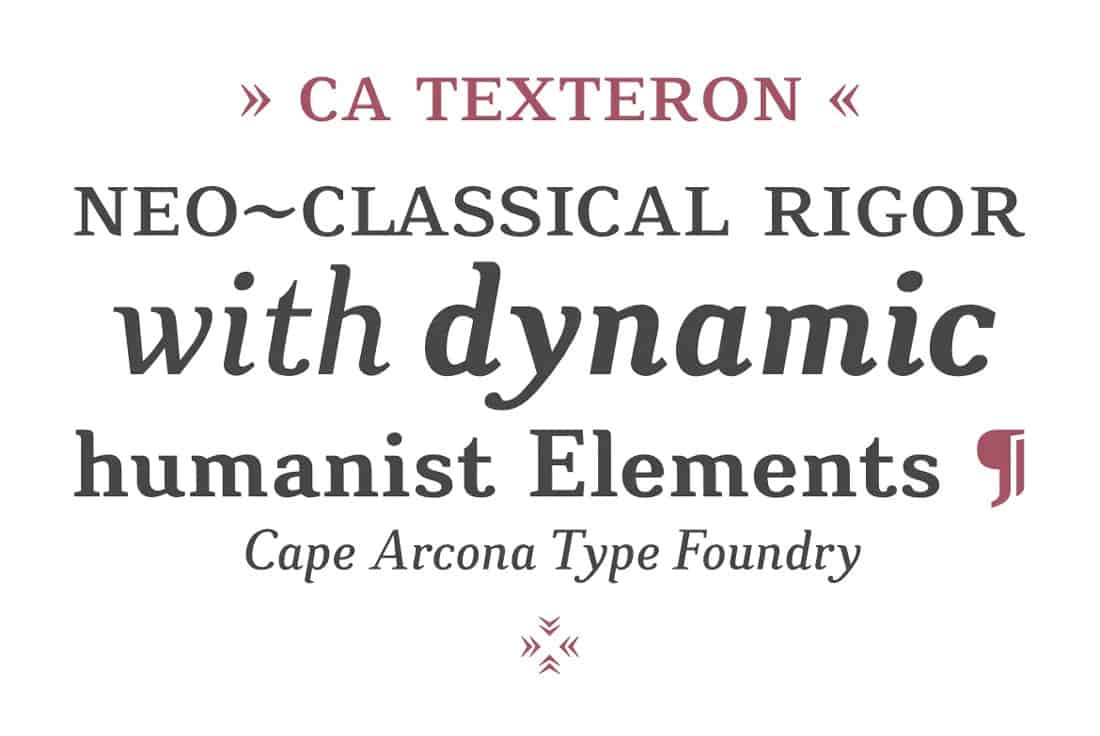
Small details are the things that set the best fonts apart from the rest. When picking out a typeface, look for details that appeal to you and your style.
CA Texteron is a great example because it includes stunning serifs with interesting shapes with round and edgy letterforms.
Pro tip: Read font descriptions and look for weights that work in smaller sizes and with decent letterspacing. Low-contrast stroke weights are also more ideal.
5. Quiche Font Family
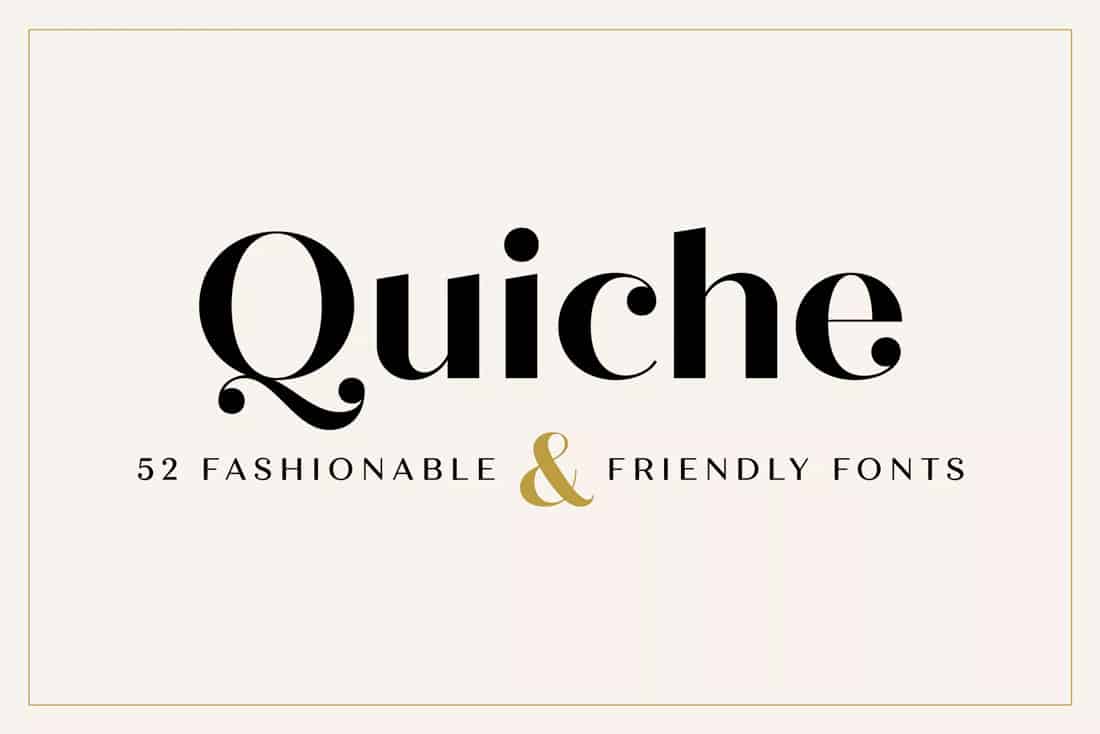
There no rule that says you need to construct a resume or cover letter with a serif or sans serif. Either option can work quite well, and you probably want to make a choice based on the personality you want to showcase.
Quiche Font Family is an easy readying, high-contrast type family with a lot of extras, including swashes, alternates, and ligatures to help you add a little something extra to your job inquiry. It also toes the line between serif and sans serif with display options that have more polish (and ball terminals) than the standard regular or thin weights.
Pro tip: Choose a robust font family and stick to style within the family for your resume and cover letter package. You don’t need a collection of fonts here; one great font can be a do-it-all solution. (The Quiche Display option makes for great headers.)
6. Fibon Sans
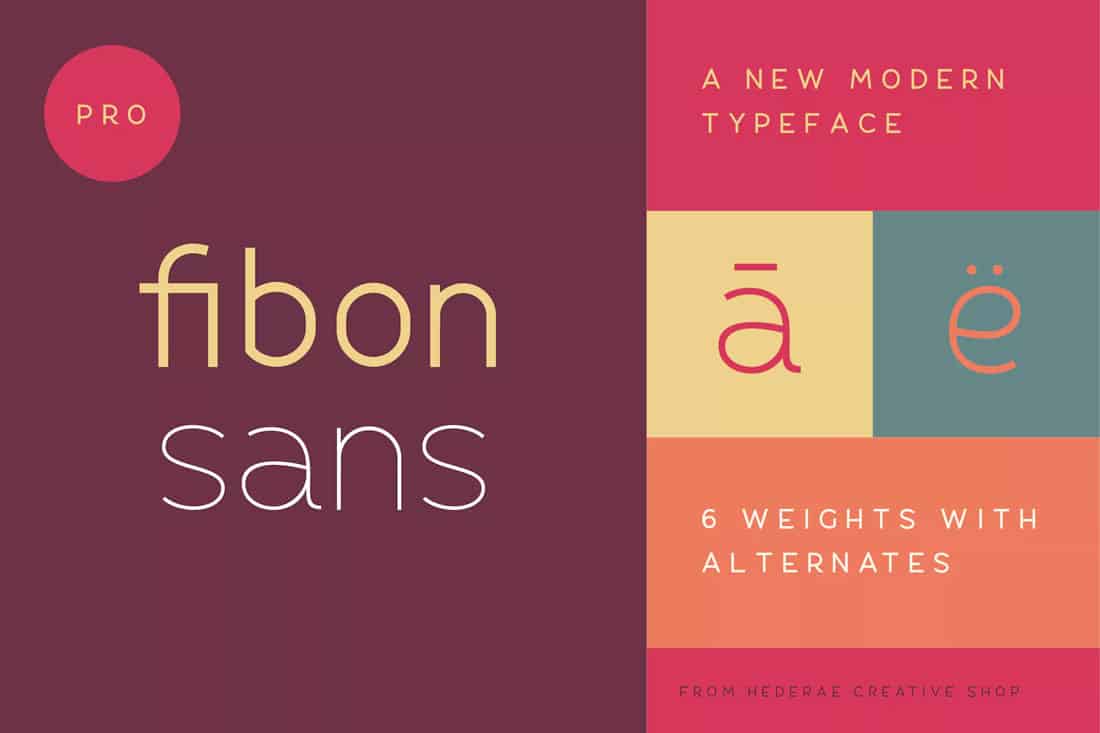
Help your resume and cover letter stand out with a typeface that isn’t the default in standard word processing software.
Fibon Sans has just enough personality to stand out without sacrificing readability. It’s modern and has weights that are appropriate for large blocks of copy (like you might find in a cover letter).
Pro tip: Avoid typefaces that include limited character sets or only all capitals. Your resume and cover letter need a mix of upper and lowercase styles for ease of readability.
7. Colorado

If you have a lot of information, you might feel inclined to use a more condensed typeface. Do so with caution.
Colorado is a nice option because it has a medium stroke width with clean and minimal lines.
Pro tip: If you plan to use a more condensed typeface, opt for one with a thicker stroke weight. Thin lines and condensed lettering can be a dangerous mix.
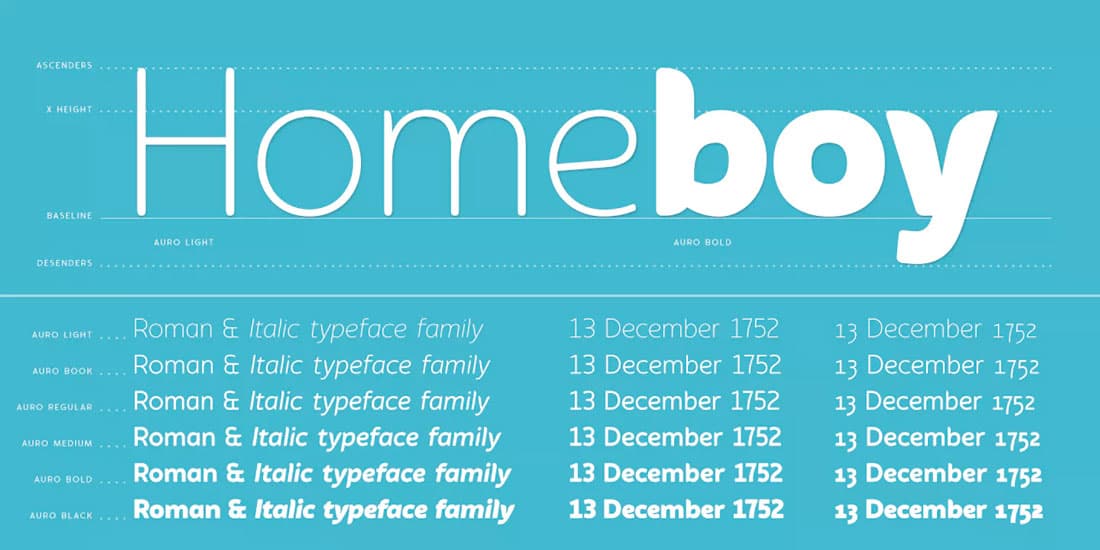
It’s OK to pick a fun font option for your resume and cover letter. The key is to balance light-feeling elements with a strong overall presence and readability.
Auro has a light feel with flowing shapes while maintaining readability. The typeface is fun but not too much fun for a resume or cover letter.
Pro tip: It (almost) goes without saying but stay away from Comic Sans or any typeface that seems too light. Emojis and smiley faces are not acceptable.
9. Modelica

The description of this typeface says it all: “Modelica is a minimal, robust, reliable and pragmatic geometric sans. Its clean shapes and generous x-height make it a very competent face for both, display and body copy purposes.”
The smooth geometry of this typeface in combination with multiple widths and styles makes it versatile and easy to work with.
Pro tip: Use bolder thicker weights for can’t miss elements in your resume or cover letter such your name or headers throughout the resume. Don’t use super condensed variations as a “trick” to cram more information in; because they can get tough to read when there’s a lot of information to digest.
10. Venice Serif
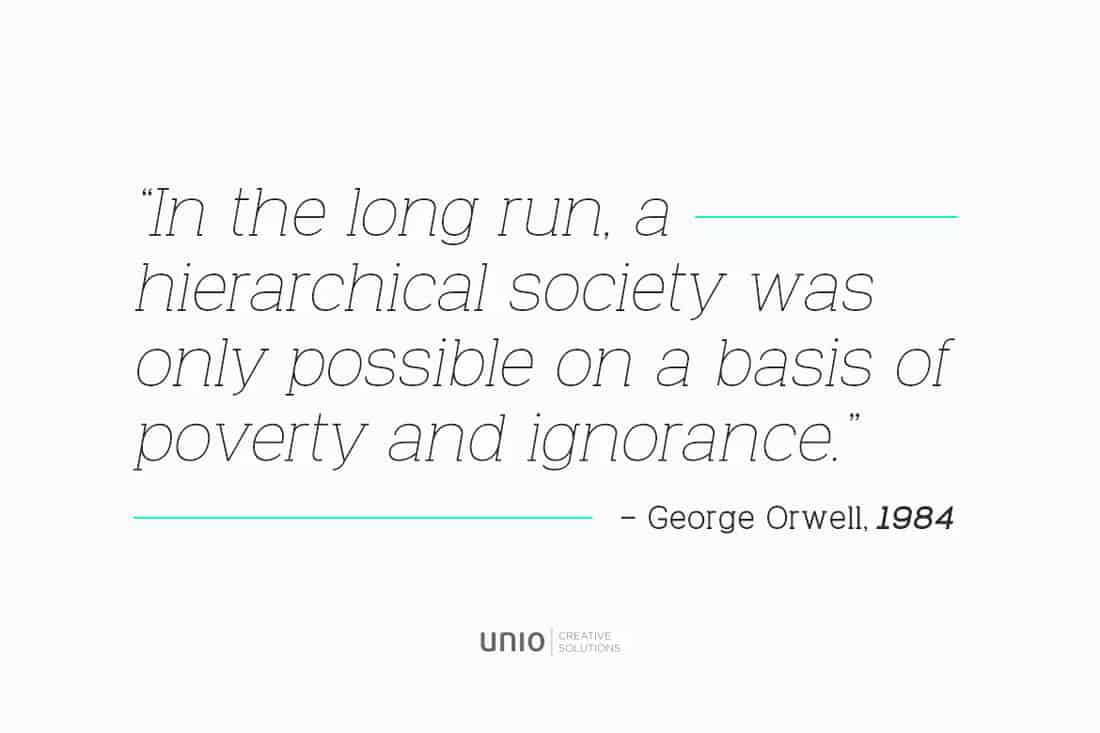
A super simple serif can help you tell a story on your resume without getting in the way of your portfolio.
Venice Serif is modern and stylish, with plenty of functionality. It has an almost monospaced style with a tall x-height that makes it look classic but more polished than some other similar options.
Pro tip: This font style is reminiscent of code. (Maybe it is the shape of the letters.) Use it for a resume that includes coding or development in your skill set. Even if that’s not the main focus area of the job you are applying for, this font style can subtly reinforce that idea.
Best Fonts to Use On Your Cover Letter
In This Guide:
Eye-pleasing fonts, get to writing.

Recruiters and human resource specialists look for reasons to keep or throw away cover letters from the second they see them. Your writing style and content of your letter may be the most important factors of whether you make it to the next round or not, but do not overlook the importance of appearance.
You can have the best-crafted cover letter that truly sets you apart from your peers, but if you write it in Comic Sans, someone will likely toss it in the trash before being read. In this article, you’ll learn about some of the best fonts for cover letters.
Upload & Check Your Resume
Drop your resume here or choose a file . PDF & DOCX only. Max 2MB file size.
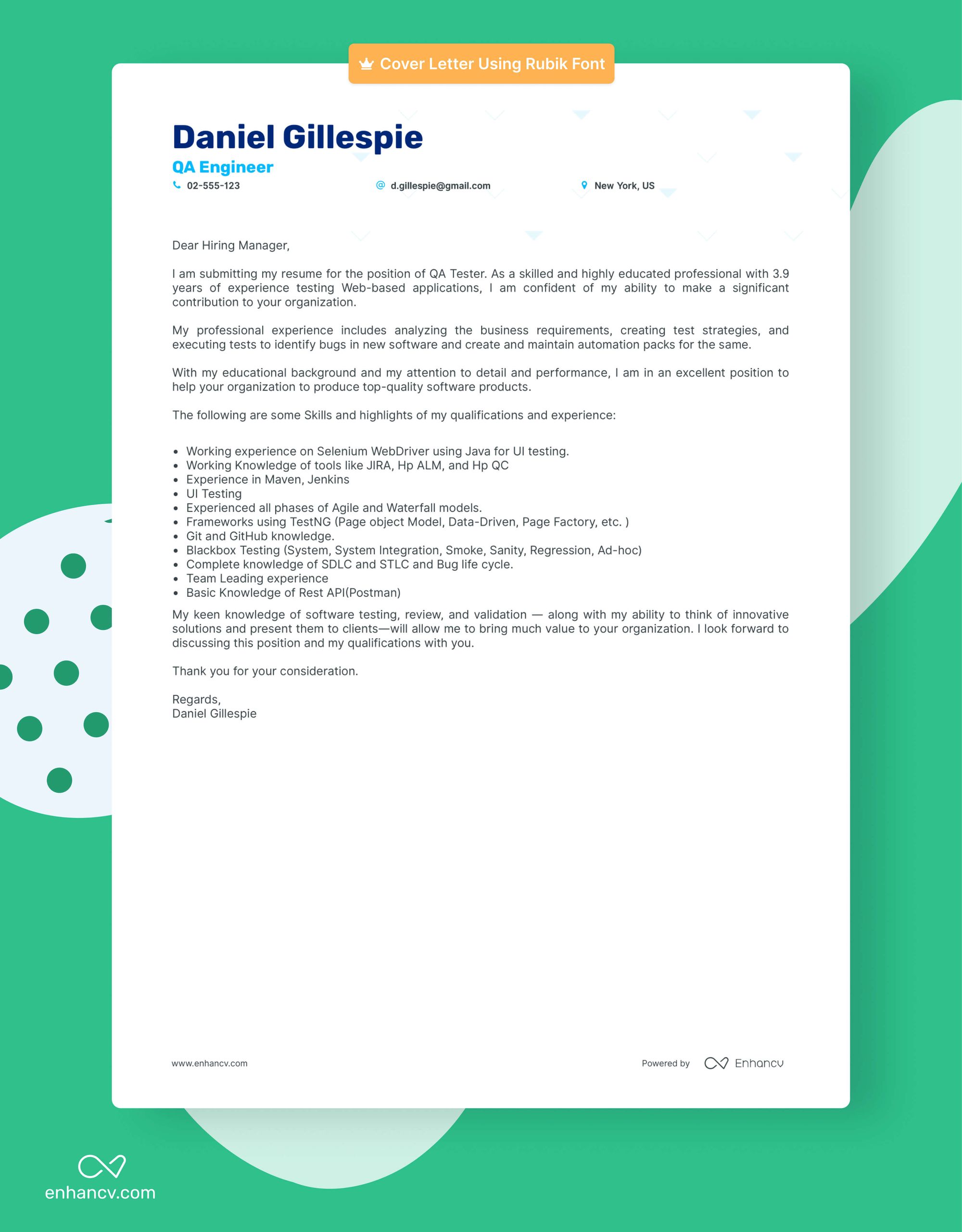
There is no single best font for your cover letter, but you cannot go wrong with the options listed below. Whether you are looking for something classic, safe, or professional while still being fun, you will find something that works for you.
Arial is a sans serif font, meaning without strokes at the ends of letters, and is always a safe choice. This classic font is clean and easy to read, making it the standard choice for most business uses — including cover letters. Arial is also a standard sans serif choice for many commonly used applications such as Microsoft Word and Google Docs.
Times new roman
Times New Roman was the standard font for printed work before documents, including cover letters, were primarily read on computer screens and tablets. This is one of the best fonts for cover letters due to it being a serif font, meaning letters have strokes that help make them easier to identify and read.
Calibri has served as Microsoft’s default serif font for nearly 15 years from its creation to today. The software giant is in the process of moving on to new options, but Calibri is still a popular and safe choice for your cover letter. The design consists of more defined lines and curves for lettering, which increases readability.
Lato is one of the best fonts for cover letters for job seekers who want to be professional but add some style. This sans serif font comes in a variety of typefaces from thin to ultra-bold. This modern font was created by Polish designer Łukasz Dziedzic in 2010.
Exo 2 is a redesigned geometric sans serif font created by Portuguese designer Natanael Gama while he was doodling glyphs. This contemporary font grabs attention in the right way while still maintaining professionality. Exo 2 would be one of the best fonts for a cover letter for anyone applying for a creative or non-corporate position.
Helvetica is a classic font that has been a favorite of the business and art worlds since the 1950s. This sans it specifically designed serif font to be neutral, making it one of the best fonts for cover letters as it will not distract the reader from what you have written.
You cannot go wrong with any of the choices mentioned here. Some fonts like Arial and Times New Roman are used more than others, but all are safe options that will not turn an evaluator off from your cover letter on sight. So check them out, make your choice, and write that cover letter!

- Cover Letter Guides
How to Write a Modern Resume
How to create a first year elementary school teacher resume, how to answer "what are your hobbies and interests" interview question, what i learned from creating donald trump's resume, what is a targeted resume, how to ace your job search with a little help from chatgpt.
- Create Resume
- Terms of Service
- Privacy Policy
- Cookie Preferences
- Resume Examples
- Resume Templates
- AI Resume Builder
- Resume Summary Generator
- Resume Formats
- Resume Checker
- Resume Skills
- How to Write a Resume
- Modern Resume Templates
- Simple Resume Templates
- Cover Letter Builder
- Cover Letter Examples
- Cover Letter Templates
- Cover Letter Formats
- How to Write a Cover Letter
- Resume Guides
- Job Interview Guides
- Job Interview Questions
- Career Resources
- Meet our customers
- Career resources
- English (UK)
- French (FR)
- German (DE)
- Spanish (ES)
- Swedish (SE)
© 2024 . All rights reserved.
Made with love by people who care.
Better Fonts
The Top 10 Best Fonts for Resumes and Cover Letters in 2023-24
Best Fonts for Resumes and Cover Letters: Your resume and cover letter are often the first impression you make on a potential employer. While the content itself is the most important factor, the formatting and design also play a role in how your materials are perceived. Choosing the right font is an important piece of optimizing your resume and cover letter to make a great first impression.
The ideal fonts for resumes and cover letters are legible, professional, and enhance readability. Classic serif and clean sans-serif fonts are best suited for resumes, as they provide clarity and are easy on the eyes. Fonts with personality or stylized appearances can distract from the content. Instead, it’s wise to stick to simple, straightforward font choices.
Table of Contents
Here are the top 10 best fonts to use for resumes and cover letters in 2023-24:
Calibri provides an excellent default font choice for resumes and cover letters. This modern, sans-serif font has a clean, crisp appearance that is highly readable at all sizes. The neutral letterforms make for great use in body text. Calibri is a safe option that works for any industry or position.
Cambria is a simple serif font that adds a more refined, sophisticated touch to resumes than a sans-serif. The thin serifs help guide the eye through the content without being overly styled. Overall, Cambria provides great clarity and legibility while giving off a professional vibe.
Arial is arguably the most commonly used font for resumes, meaning it’s easy on the eyes and blends in without distraction. This widely available sans-serif font has crisp, straightforward letterforms. While Arial is a bit overused, it remains a solid, safe option for resumes.
4. Garamond
Garamond’s classic old-style serif design gives resumes a subtle sophistication. This font originated in the 16th century yet retains an elegant, modern quality. Garamond is easy to read at small sizes and provides a refined touch. Just avoid stylistic variants with thicker serifs.
Georgia is very similar to the ubiquitous Times New Roman, but with slight differences that give it a more modern, stylish feeling. This versatile serif font has excellent clarity. It’s ideal for text-heavy resumes and cover letters thanks to strong readability.
6. Helvetica
Helvetica is the quintessential clean, Swiss-designed sans-serif font. It has a simple, neutral appearance that is highly legible. The modern, minimalist look of Helvetica adds a polished touch for contemporary resumes. This versatile font works for just about any industry.
Tahoma provides a sans-serif option with a bit more personality and stylistic flair than classics like Arial. This font has nicely rounded letterforms and good clarity. Tahoma offers a great balance of professionalism and approachability for resumes.
Verdana was designed specifically for legibility on screens, making it a smart choice for resumes crafted for digital submission. This wide, sans-serif font has an open appearance that maximizes readability. Verdana helps ensure your resume remains crisp and clear.
9. Open Sans
Clean, neutral and optimally legible, Open Sans is an ideal font for resumes and cover letters. This highly readable sans-serif has a simple appearance despite its fun, geometric influences. Open Sans comes across as warm and welcoming while retaining professionalism.
For a font with a bit more character, Lato is an excellent choice. This contemporary-feeling sans-serif has a touch of rounded, unique style while maintaining strong clarity thanks to its simple letterforms. Lato keeps things professional yet approachable.
Key Takeaways for Picking the Best Fonts for Resumes and Cover letter
Focus on simple, straightforward fonts that provide strong clarity and readability. Serif fonts like Georgia and Garamond add sophistication while clean sans-serifs like Arial and Helvetica give a modern, neutral look.
While personal preference does play a role, stick to universally legible fonts without styling that could distract. Avoid handwritten or display fonts, instead choosing readable options like the selections above.
Remember that content is still most important, but font can make a strong first impression. Experiment to see what feels best to you. Using one font for headers and another for body text can provide contrast.
And don’t forget to pay close attention to font size! Body text should be between 10-12 points for optimal readability. Keep your fonts consistent across sections. A cohesive design is key.
With these top font recommendations and tips in mind, you can craft perfectly professional resumes and cover letters tailored to make just the right impression. Don’t let poor font choice detract from your stellar qualifications.
Frequently Asked Questions About Resume and Cover Letter Fonts
Should resume fonts be serif or sans-serif.
Sans-serif fonts like Calibri, Arial, and Helvetica tend to provide the cleanest, most modern appearance. But serif fonts like Cambria and Georgia can add sophistication, visual interest, and improved legibility. Either serif or sans-serif fonts can be ideal options for resumes. Focus on picking a simple, straightforward font for maximum clarity.
Is Times New Roman a good font for a resume?
While Times New Roman is common, it can be a bit overused and dated for modern resumes. But it remains highly readable if you prefer a serif. For a slightly cleaner, more contemporary look, good alternatives to Times New Roman include Cambria, Georgia, or Garamond.
Can you use creative fonts on a resume?
Fonts with creative, stylized appearances can distract from resume content. Fancy script, handwritten, or display fonts could potentially hurt your professional image for traditional roles. Stick to classic, readable fonts like the selections covered above to maximize legibility.
What font size should you use for resumes?
10-12 point size is optimal for resume body text. Any smaller and content becomes harder to read. Font sizes between 10-11 points keep your resume clean and scannable. For headers and subheadings, bump up font sizes slightly to 14-16 points to make these sections prominent.
Should you use multiple fonts on a resume?
Using one primary font helps maintain consistency and keeps your resume cohesive. But pairing one font for headers with another complementary font for body text can provide visual contrast. Just make sure the fonts work well together by choosing simple, similarly styled options with strong readability.
Choosing the optimal font is a key piece of designing resumes and cover letters that make a great first impression. Focus on legible, professional fonts that enhance readability rather than distract from your qualifications. With this list of top font recommendations, you can pick options tailored specifically to highlight your credentials.
Leave a Comment Cancel reply
You must be logged in to post a comment.
- Resume Examples
- Resume Samples
- Resume Templates
The best fonts for resume and cover letter
Getting a job is not easy nowadays, with stiff competition and tons of applicants per available job opening. You need each part of your resume to demonstrate that you are ideally suitable for the role. Once you've weighed your experience, expertise, schooling, and credentials, you have yet another decision to consider, what's the right font to include on your resume?
With too many choices open, choosing the right font for a resume can often be a tough call. When the interviewer scans the cover letter for the first time, they usually check for 6 seconds. Employers spend several hours per week scrolling through the endless influx of applications submitted to them.
Picking a font size and style that is quick and easy to understand is the secret to building a solid initial impression. A decent font reflects your integrity and improves functionality, allowing your resume a shot to get it to the top of the stack. Font choice is a vital aspect of your resume as it lays the groundwork for your entire job application. You may consider various fonts for the resume sections and the headers, and you don't have to choose more than two.
The font types stated in this guide are all formal, decent, and clean font options. A selection of a lot of font styles risks being invalid to the applicant monitoring software. Your resume font type should look like an expert, not overshadow your content. Here is a list of the cover letter and resume fonts;

Times New Roman is the known resume font—that's why you should stop using it. The times new roman is quite old, and if you do not want your resume and cover letter to appear outdated, you have to pick something else. And Garamond is a suitable option for that. The new edition has the option of providing your resume a timeless, professional look that is even more compelling than the cliched Times New Roman. As an advantage, if you're unable to compress to a single or two sheets, Garamond can allow you to add more content to your resume without losing functionality by reducing the text size or clogging your template by restricting the resume space.
Helvetica is the most elegant font style for your cover letter and resume. Due to its positive and tidy nature, it has rapidly become a corporate typeface. It's also clear to understand and appealing without getting distracted. Apply this style for a position in a corporate office environment, like customer support or marketing. This san-serif is known to be the master of font styles by several artists and typographers. Due to its sleek, straight lines and outstanding transparency, many company logos have Helvetica font styles like American Airlines, Microsoft, etc. To offer your cover letter and resume a fresh, modern feel that's formal.
Many corporations such as New York Times use this formal iconic typeface. In reality, Georgia was mainly for digital screens and handheld devices. It enables it the perfect font option if you submit an email resume and cover letter. This typeface is ideal if you submit for an online position or if you want to make your resume and cover letter a clean, formal appearance. This font style has letter shapes with heavier strokes that enable it easily-readable even in small sizes. And, it works perfect on any online document, like you're submitting your resume and cover letter as a Pdf file format.
With sharp lines and elegant style, it is one of the familiar font styles in the world. It is the default font for Microsoft Word, which ensures that every computer can view it precisely. A few employers, though, see Arial as very ordinary. But if you're applying for a job with an innovative or cutting-edge business, a much more versatile font might be preferable. Including a font style that is so popular can be seen as a casual preference, not investing a lot of consideration or work into your resume and cover letter.
This stylish typography will add some design to your resume and cover letter. It is popular with sectors such as fashion and photography. Even so, the serifs are more shown in high volumes, so you'll do your utmost to keep Didot for captions instead of body copy.
While it is the generic MS Word typeface from 2007, Calibri still isn't much famous as Arial. However, this type does have other aspects to it. Like a 12 pt font size in Calibri can generate between 500-750 phrases, the optimal length of a two-page resume.
This flexible font style has a very smooth, sharp look that will offer an up-to-date typeface to a cover letter and resume. It has several levels that you can choose to distinguish the various parts and aspects of your application, and you can likely ignore any compressed variants that might be tough to interpret. Avenir Next is another successful choice; it was launched as a sequel to Avenir to enhance the typeface on-screen display functionality. Avenir may be a less secure option than other typography on this cover letter font collection but consider it. Its unusual form and quirky designs lend it a colorful feature that will enable your resume and cover letter to succeed in a pool of applications.
This clear, elegant sans-serif font style, created in England, will provide your resume and cover letter a feel that is both traditional and unique. British Railways network was using this font style and also in other areas. You may also note that Gill Sans is quite identical to the design typeface used in the iconic Stay Calm and Carry On poster, reintroduced in the British bookshop in 2000. And then it became famous with several copies of the style. Mac OS X and few Microsoft applications include Gill Sans.
Conventional and easily readable, Cambria is a perfect typeface option for resumes and cover letters of all varieties. Its simple style works well on every channel on paper or a pc display. This font is perfect if you want to submit your resume and cover letters for a position in a highly technical sector, like finance or bookkeeping. It is a component of a set of fonts named the ClearType typography series and spread with Microsoft Office systems. Such fonts like Cambria, Candara, have been specially prepared to facilitate properly on computer screens. The company that crafted Cambria designed it for on-screen comprehension while still in use for printing, thanks to its durable letter structure, which maintains readability even in small sizes. It allows Cambria a perfect fit for both online and published resumes and cover letters.
Create a resume
Here is another guide on How to choose the best fonts for your resume
Selecting the right resume and cover letter font and size
With tons of typefaces to pick from, it can be tough to select the font that will make the ultimate impact on the recruiter and raise the likelihood of going forward in the recruitment process. It might be appealing to pick a font type that reflects your character, but remember that headhunters will eliminate your application if the typeface makes it difficult for them to read your cover letter and resume. Although, your name should not have a similar font size as the rest of the resume. A simple principle is to create the font for your name double, the font size used in the resume and cover letter text.
Most hiring managers still use the candidate monitoring system to document and arrange work applications. This software can not often read and comprehend complicated typefaces well, so difficult or specific font choices often transform into empty frames or other improper letters.
If you develop a job application for graphic design or advertising, there are more options regarding aesthetics. Sometimes, imaginative interviewers see the job application as a demonstration of artistic skills and talents, and it should reflect your work. And then, maintaining that your resume is easily readable is a primary goal. Here, we're going to go over a few suggestions to ensure you pick the right font style and size for your resume and cover letter.
- Integrate a formal, easily readable font style
Intricate fonts can make it challenging to understand the resume, which may cause hiring managers to skip it. So use a fresh, clear resume typeface that ensures your content is visible to the recruiter. There are two primary font types, Serif and Sans-Serif. These typefaces are usually decent fonts for cover letters and resumes because of their wide legibility. There have been some Serif font types that recruiters acknowledge as easy and formal, Garamond and Didot.
- Identify the correct size of the resume and cover letter font.
The ideal font size for your cover letter and resume is between 10-12 points. The size you decide will mainly dictate how the font size influences your resume style. Since it's usual strategy to have a single or two pages resume , proceed with a font size of 10 and explore with size if you feel there is scope.
Although it can be easy to keep the overall resume on a single-page, ignore lowering the font size under 10 points. It's going to make the text rough on the viewer's eyes. If your resume is more than a single-page, then update the text and generate more descriptive suggestions by deleting redundant terms or statements. Just the most appropriate material that best shows your knowledge and expertise as per the job position.
- Incorporate style to the resume and cover letter typeface
You may also insert individuality or meaning by choosing font types for your name and segment titles, like bold text and italicize. Although your whole resume should have a single font, you may stylize or raise the size of essential parts like Skills or Employment. Be compliant with aesthetics, and pick one or two font style to verify that your resume and cover letter is formal and pleasing to the eye.
You may use examples of standard resumes available online to help you get started.
Financial Analyst Tried and tested resume example for your next job in 2024. Get a jump-start, by editing this Financial Analyst resume example. Just update this example with your details, download and launch your career to new heights today!
Avoid using these resume fonts and cover letter fonts.

Futura was made in the 1920s and crafted in Germany with a more abstract shape. But it's a tidy, appealing font, and the font structure is a little conventional and peculiar. Futura bends more towards aesthetic and intriguing than functional for text-heavy papers such as resumes, with inconsistencies including tall lowercase letters and a distracting difference between sharp and circular letter-forms.
Crafted to imitate the feel of a typewriter and finally tailored for use on a real electrical typewriter. This typeface certainly looks like you printed your application on a typewriter. Since this is a fixed-width typeface, it may seem a little irregular, even for complete pages of information.
- Century Gothic
It has a clean, industrial look, but it's maybe too unusual for cover letters and resumes. This font's thin size can be confusing, mainly in small sizes.
To make a professional and strong impression with the cover letter and resume. There is no requirement to use the bold, strong typeface. The impact is to employ in resume headlines, so if it contains lowercase characters, individuals use it for body duplication, it is difficult to read.
- Brush Script
You don't have to incorporate the Brush Script typography, which was predictable that it now seems inexpensive and obsolete instead of vintage and nostalgic. Though a few design professions give some leniency to experiment with the presentation of your cover letter and resume. But it's still a decent option to conform to traditional font preferences.
Trajan Pro has a confident, significant style, but it is more fitting to gravure it in concrete than to characterize it on your cover letter and resume. It is due to the typography was driven by the letterings set into the Pillar of Trajan, a temple devoted to the Roman monarch of a similar name. The font has only upper-case and small caps rendering it inappropriate to write clear statements on your cover letter and resume.
Graphic Designer Tried and tested resume example for your next job in 2024. Get a jump-start, by editing this Graphic Designer resume example. Just update this example with your details, download and launch your career to new heights today!
After choosing your font type and tweaking your resume and cover letter correctly, carefully check and receive reviews. Because hiring managers while glancing at your resume can publish it to discuss with company executives or carry it for the interview, so print a sample version and ensure the typeface is visible. And the visual style is stable and does not impact the quality of the cover letter and resume.
Create your resume in minutes for FREE.
Use resume templates that are tested and proven to fit the rules employers are looking for.
HipCV guide on how to become a medical surgical nurse & salary, certifications, educational qualifications to be a med-surgical nurse.
HipCV guide on how to write a medical surgical nurse cover letter along with medical surgical nurse cover letter example.
HipCV guide on steps to become a java developer along with certifications, salary of a java developer.
HipCV guide on tips for writing a java developer cover letter along with java developer cover letter example
HipCV guide on steps to become a childcare provider and childcare worker.
HipCV guide on how to write a childcare cover letter along with childcare cover letter example.

9 Tips for Creating Your Freelance Graphic Design Resume
F reelance work provides a path toward setting your hours and determining your healthy work-life balance. Chris Grosser states , “Opportunities don’t happen; you create them.” The best way to stand out is with a compelling freelance graphic design resume that helps you find the best opportunities to grow your career.
The best resume will help you pop off the page and encourage the client to contact you to learn more about how you can help their brand. The challenge is knowing the best things to add to your professional resume to impress clients and spur career growth.
Luckily, you’re in the perfect spot to learn more about graphic design resume ideas and tips to create a strong case when courting new clients. Continue reading to emphasize freelance career building with your resume today!
1. Remember the Basics
It’s critical to list your basic information on a freelance graphic design resume. The basic information often gets lost in the shuffle when attempting to stand out to clients. Ensure you have your name, contact information, and LinkedIn profile on the resume to make contacting you straightforward.
Remember that your resume will be scanned, so you can save time by not overdoing the headings on your resume. You should refrain from labeling past work experiences as gigs, as your resume could be thrown out before ever getting in front of a hiring manager or client.
2. Be Straightforward
A concise freelance graphic design resume is the best approach to gaining new clients and career opportunities. Keep your resume at two pages or less for the best results. The ideal resume contains all relevant information on one page.
It’s tempting to show off all your relevant experience, but a long resume is less likely to be read from start to finish. Most hiring managers will skim resumes. Provide headlines that grab attention instead of attempting to share your life story.
3. Avoid Word Processors
As a graphic design professional, you have the skills and experience with programs designed to create impressive resumes. Use those skills to demonstrate what you can do for clients. Your resume is an opportunity to show your skills within different design programs.
Google Docs and Microsoft Word won’t cut it when attempting to turn the head of a large corporation. Use the skills you’ve honed to show the hiring manager that you’re the perfect candidate for the job.
4. Use the Best Fonts
Knowing which fonts to use and which to avoid is an excellent step toward designing a stand-out resume. Fonts that are easy to read Trendy fonts are often a bad idea, and the most crucial factor to consider is the legibility of the font you choose for your resume.
Choose a font that is easy to read or skim. You can use the client’s website to gauge which font option is the best based on the brand’s tone. A company with a modern font will likely appreciate a stylish font choice on your graphic design resume. Work with the best virtual assistants to keep your resume clean and your content growing.
5. Add Color
The key to using color with your graphic design resume ideas is to avoid going overboard. A bit of color is an asset to your graphic design resume, but too much color distracts the reader from the necessary information. The best color schemes contain two or three colors that work well together.
Use the colors in crucial areas on the document to spruce things up and put your resume over the top. The goal is to draw eyes to specific sections of your resume with subtle colors and design elements.
6. Use Your Experience
Use your experience to bolster your resume. If you used a specific program or designed an impressive website for a client, share information about it and demonstrate your knowledge. Talk about the steps you took and the obstacles you overcame to create the finished product.
Hiring managers are wary of graphic designers who claim others’ work as their own. Demonstrating your process and knowledge is a fantastic way to stand out from other candidates vying for the position.
7. Provide Work Samples
Putting your money where your mouth is is quite effective when building a freelance graphic design resume. The best way to show what you’re capable of is by providing work samples from past projects you’ve handled.
Build a short collection of your best works to demonstrate your talent and experience. Work samples act as fantastic teasers to gain attention from hiring managers and convince them to check out more of your portfolio.
8. Stay Consistent
Knowing when to stop is an essential part of becoming a successful graphic designer. It’s natural to want to experience using different design elements, like colors, fonts, and templates. Consistency is one of the most effective ways to tone your resume down.
Maintain a consistent color palette from start to finish. Apply that template to your cover letter to maintain the same theme when applying for jobs or contacting potential clients.
9. Provide a Cover Letter
The last tip for graphic design resume ideas concerns something other than the resume. Your cover letter is an essential document that tells your potential client much about you, your experience, and how you can help the potential client improve their business.
Keeping your resume short is wise, and you can use your cover letter to tell your story and share your graphic design journey with potential clients. Maintain a professional tone within your cover letter and focus on your career. It’s an effective way to share more relevant information about your graphic design background with the client.
Create Your Freelance Graphic Design Resume Today
Building a freelance graphic design resume is crucial to career growth and finding new clients to work with. Use your design skills to find a font and color scheme that attract attention and help you stand out.
Include your basic information, and use a straightforward approach to sharing your background and experience. Provide a work sample to demonstrate your prowess, and be prepared to share your design methods.
Finding new career opportunities is daunting, but the proper guidance will put you on the right path toward career growth. Check out more of our Career blog content to take your next steps toward a brighter future.
This article is published by NYTech in collaboration with Syndication Cloud.
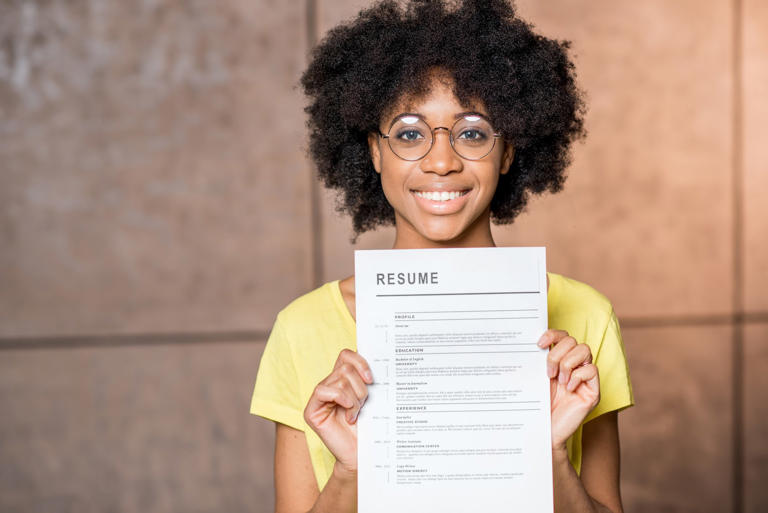

IMAGES
VIDEO
COMMENTS
2. Select the right resume font size. The optimal font size for your resume is anything between 10 and 12 points. The size you choose can be largely determined by how the font size impacts your resume layout. A one-page resume is appropriate for new graduates or employees new to a field.
8. Trebuchet MS. Boasting thick lines and simple curves, Trebuchet MS is a great choice if you need to fill space or make your cover letter extra easy to read. Designed for Microsoft Word, this font can now be found on most word processing software, including Google Docs.
Helvetica: This font is a sans serif font with a concise design. When utilized for a cover letter, it does not distract a reader from the content. If you're applying to a contemporary workplace, Helvetica is a suitable choice. Times New Roman: A classic serif font, Times New Roman is widely used in job applications.
Here are some of the best fonts to use for your resume. Calibri: The Calibri font has a contemporary style with a modern, clean, and professional appearance. The font is easy to read and ...
The standard font sizes for resumes are as follows: Header (your name): 28-35pt; Section headers: 14-16pt; Body content: 10-12pt; Readability is the most important part of choosing your resume font size. So while 10-12 points works for most resume fonts, the truth is that each font varies. To find a perfect balance: pick a font style
The best font for a cover letter should be simple, clear, and match the font you use in your resume. The most popular choices include Times New Roman, Arial, Calibri, and Verdana. The font size should be set to 12pt and it's best to limit yourself to just one typeface. But that's not the full answer on what font is suitable for a cover letter.
Times New Roman becomes hard to read in small sizes. Overall, Georgia is a great cover letter font option for those who want to add some extra "personality" to your cover letter, while still maintaining professionalism. 5. Garamond. Garamond is another fine example of a time-tested font.
The even spacing and proportions make this an ideal choice for cover letters. Garamond is a more delicate font, but with a classic serif form, good for conveying an air of sophistication on resumes. Based on sixteenth-century designs, the Garamond style typefaces are perfect for both print and digital cover letters readability.
Arial: Sort of like a Helvetica for the 21st century, Arial is a modern sans serif font popular for its legibility and clean lines. This one always makes the list of best fonts for cover letters. Calibri: Another good sans serif option, Calibri is the current default font for Microsoft Word.
Key Points. In experts' opinion, Calibri is the best font for a resume and a cover letter, too. Comic sans and other script or funky typefaces make the worst fonts. Body text should be 11-12pts, while subsection headings can be 13-16pts. Use bold and italics sparingly to accentuate particular passages.
Garamond: This serif font features a classic appearance that can make both your cover letter and resume look professional. Garamond works best for printed cover letters. Cambria: For a less formal option, you can consider Cambria. This is the standard font for Microsoft Word since it's easy to read for many users.
The best resume fonts. 01. Garamond. Times New Roman is probably the most commonly chosen fonts for resumes—the very reason you should avoid it, and why it appears on our "Worst" list. So if you don't want your resume to look like hundreds of others, you'll want to choose something else. And Garamond is a great alternative.
Here are some top cover letter fonts that you can choose from: Times New Roman: If you want to play it safe and go for the traditional approach, Times New Roman is your best choice. This font type is widely used when candidates are applying for government jobs and other traditional industries such as law and medicine.
Focus Grotesk - Geometric Sans-Serif Typeface. Focus Grotesk is a creative and minimalist sans serif font that comes with 10 typefaces including 5 different font weights and 5 italic versions of the weights. The handcrafted design of the font will make your resume and cover letters look more attractive as well.
8. Auro. It's OK to pick a fun font option for your resume and cover letter. The key is to balance light-feeling elements with a strong overall presence and readability. Auro has a light feel with flowing shapes while maintaining readability. The typeface is fun but not too much fun for a resume or cover letter.
Exo 2 is a redesigned geometric sans serif font created by Portuguese designer Natanael Gama while he was doodling glyphs. This contemporary font grabs attention in the right way while still maintaining professionality. Exo 2 would be one of the best fonts for a cover letter for anyone applying for a creative or non-corporate position.
Eight Best Cover Letter Fonts. There are many different fonts available but some are considered more professional-looking than others. And, while many fonts look cute and fun, they are not recommended for use on a cover letter. Here are the eight best fonts to use on your next cover letter: Arial; Calibri (often the default font on Microsoft ...
1. Calibri. Calibri provides an excellent default font choice for resumes and cover letters. This modern, sans-serif font has a clean, crisp appearance that is highly readable at all sizes. The neutral letterforms make for great use in body text. Calibri is a safe option that works for any industry or position. 2.
font: chosen for readability and professionalism (Calibri and Georgia are examples of the best fonts for resumes and cover letters) font size: set between 10 and 12 points for easy reading; Best Cover Letters of 2024. Facebook. Twitter. Linkedin. Copy link.
These typefaces are usually decent fonts for cover letters and resumes because of their wide legibility. There have been some Serif font types that recruiters acknowledge as easy and formal, Garamond and Didot. Identify the correct size of the resume and cover letter font. The ideal font size for your cover letter and resume is between 10-12 ...
1. Calibri. Calibri is a modern sans-serif typeface that became the default font for Microsoft Word in 2007. Its clean design, combined with rounded edges and a warm appearance, makes it highly legible both on screen and in print. Pros: Calibri's sleek design gives documents a contemporary and professional appearance.
A professional résumé writer says you need to use Microsoft's new font on your résumé. Résumé expert Donna Svei says Microsoft's Aptos is the best new font family for résumés she's ...
Maintain a consistent color palette from start to finish. Apply that template to your cover letter to maintain the same theme when applying for jobs or contacting potential clients. 9. Provide a ...